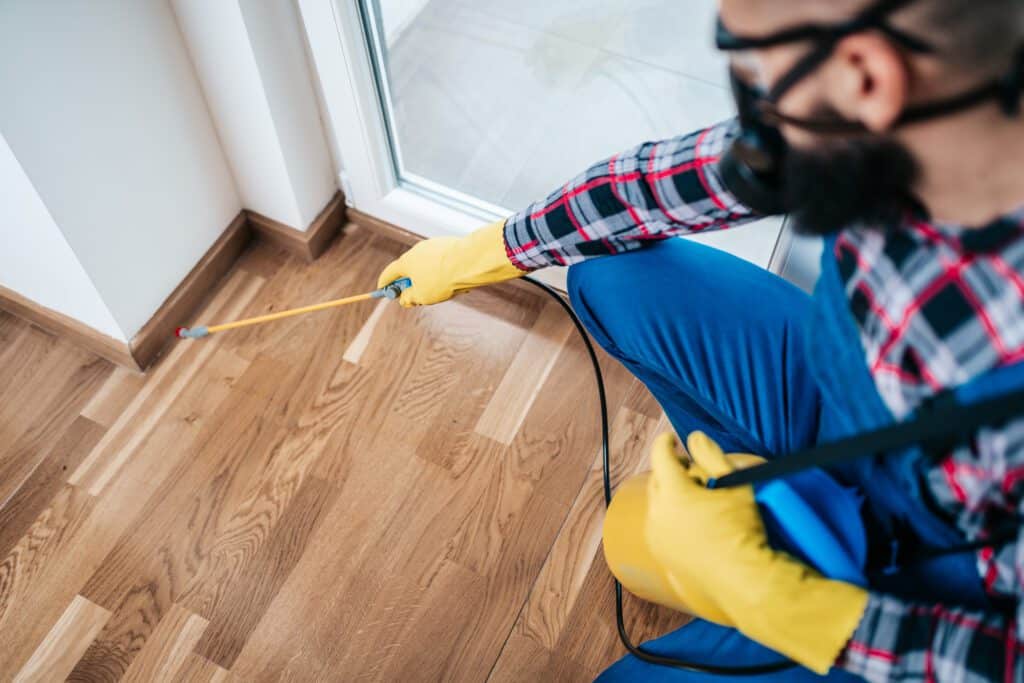In the old days, homeowners dealing with a cockroach infestation would reach for the phone book to find a local pest control company. But in 2022, they’re almost certainly doing a quick Google search. So if you’re a pest control company, it’s critical to optimize your website for search engines. SEO, or search engine optimization, can bring more customers and help improve customer trust.
So if your pest control company’s website is suffering from low traffic, here are 6 foolproof ways you can improve SEO.
- Build a Helpful, Easy-to-Navigate Website
Your customers come to your website for information about you, your services, and your contact info. What’s more, if they’re dealing with an infestation, they likely want an appointment ASAP. Make things easy for them by building an informative, user-friendly website. There are some great tools out there to help you DIY your website, but some things are worth turning over to professionals. Consider hiring a web designer and copywriter to help you build a sleek website. Another option is to hire a marketing agency that offers web design services.
- Publish High-Quality Content
Search engines prioritize websites that publish quality content. So it pays to invest in well-written, informative content that answers common questions about pest control. When a user performs a search, they’ll find your blog. And if they stick around and read your content, you may very well have a lead!
Here are a few examples of topics that a pest control company might publish:
- How to Get Rid of Cockroaches
- Ants vs Termites
- Signs of Bed Bugs
Keyword research is a critical part of your content strategy. You can familiarize yourself with keyword research best practices, but many business owners prefer to hire a digital marketing agency to help with this.
- Keep Your Website Updated
Once you’ve built a beautiful website for your pest control company, the work of upkeep begins. From a technical standpoint, you can maintain your website by fixing broken links, getting rid of intrusive ads, and auditing for security vulnerabilities.
But on the content side, you’ll also need to regularly update your site with:
- Consistent blog content
- Updated company bios
- Current contact information
- Services currently offered
- Latest promotions
Outdated information can affect your ranking in the search engines, but it can also cause issues for you and your visitors. Make sure to audit your site frequently to address backend issues and publish content.
- Implement Technical SEO Best Practices
While your blog is a critical component of SEO, a successful SEO strategy involves getting under the hood with technical SEO. Technical SEO refers to the “on-page” optimizations that demonstrate your trustworthiness to search engines.
Here are a few technical SEO best practices to familiarize yourself with:
Custom Meta Descriptions
Meta descriptions appear beneath the link to your page in the search results and tell users what the page is about. Think of them as a piece of ad copy to attract people to your site. Optimize your meta description by writing a short blurb using the target keywords of your blog post.
Custom URL Slugs
Your URL slug is the piece of text that defines a page in a hyperlink. Your URL slugs should be simple, descriptive, and use target keywords.
Optimized Images
Good websites contain lots of images. In fact, users may even find your website via Image Search! So be sure to tag your website’s images correctly.
- Before uploading photos, create a descriptive filename (e.g. “german-cockroach-vs-american-cockroach.jpg”)
- Update the image description on your website (e.g. “side-by-side comparison of an adult german cockroach and american cockroach”)
- Update the image’s alt-text, which helps the visually impaired navigate your website. (e.g. “small german cockroach with two dark parallel lines on its back next to larger, yellowish-brown american cockroach”)
Optimized Headers
Use descriptive headers that include your target keywords. This helps search engines index your website properly—and that means more visitors!
Internal and External Links
You should link between your website’s pages wherever possible. This helps users navigate and keeps them on your website. However, make sure you include links to other authoritative websites as well. For example, if you offer a particular special type of pet-friendly fumigant, consider linking to that page on the manufacturer’s website. When adding external links, be sure you aren’t accidentally linking to competitor websites.
- Optimize Your Pest Control Company’s Website for Local SEO
If you’re a small local business, local SEO is your best friend. Optimize your website and blog content towards your geographic region to help direct local users to your site. For local SEO, be sure to include your city in your headers and add detailed directions to your office.
You can also optimize your content strategy for local SEO. For example, a pest control company in Charlotte, North Carolina might publish content about city-dwelling intruders such as rats and bed bugs, while an Asheville-based pest control company might post more about rural pest control problems like fleas, ticks, and scorpions.
For larger businesses, creating local SEO content for each of your locations can help you gain traction in each of your service areas.
6. Hire a Digital Marketing Agency
Between web development, content strategy, and maintenance, SEO is time-intensive. If you’re like most pest control companies, you’re busy with day-to-day operations. If that’s the case, consider enlisting the help of a digital marketing agency to help you put your SEO on autopilot while you focus on running your business.
Final Thoughts
With these pointers, you can get your company to the first page on the search results. But if you’d rather stick to pest control and leave SEO to the experts, Wedgewood Marketing can help. We’re a Charlotte-based digital marketing agency specializing in SEO, pay-per-click, and social media. We help local businesses like yours get more customers with targeted, data-driven marketing services. Contact us today for a free audit.
